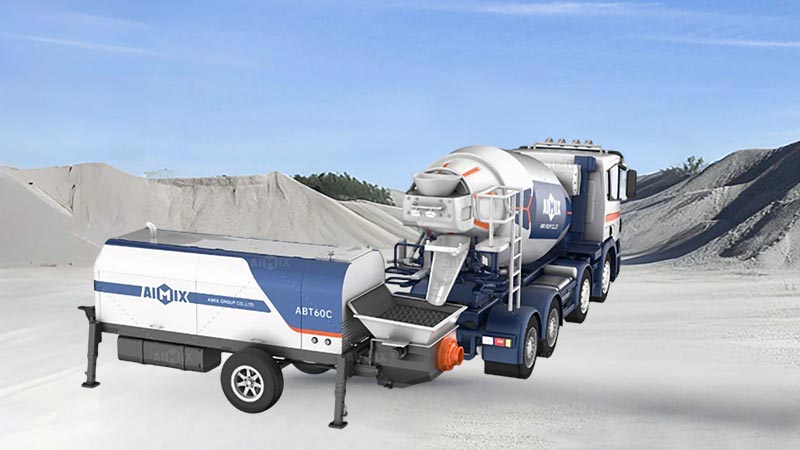Dubai’s construction sector stands at a pivotal juncture, characterized by an ambitious pipeline of mega-projects and an increasingly pressing imperative for operational optimization. The emirate’s trajectory, defined by architectural marvels and rapid urban expansion, now demands a paradigm shift in construction methodologies to address challenges related to labor dynamics, logistical complexity, and environmental sustainability. Within this evolving context, the self loading concrete mixer is transitioning from a niche piece of equipment to a potentially transformative technology. Its integration represents a strategic response to the sector’s evolving needs, offering a synthesis of automation, mobility, and efficiency that aligns with the future direction of construction in the region.
Addressing Core Challenges in the Dubai Market
The unique pressures of the Dubai construction environment create a fertile ground for the adoption of self-loading technology. These machines offer targeted solutions to some of the industry’s most persistent pain points.

Labor Optimization and Skill-Gap Mitigation
The traditional concrete pouring process is notoriously labor-intensive, requiring a crew for loading, mixing, transport, and placement. Self loading concrete mixer in Dubai fundamentally reconfigure this workflow. By consolidating these functions into a single, operator-driven machine, they effect a dramatic reduction in manual labor requirements. This is particularly salient in a market experiencing shifts in labor availability and rising wage expectations. Furthermore, the role of the operator evolves from manual labor to equipment management, mitigating the industry-wide skill gap by requiring a more technically proficient, but smaller, workforce. This transition supports the sector’s long-term move towards a more skilled and technologically adept labor profile.
Logistical Streamlining for Complex Urban Sites
Construction within a dense urban fabric like Dubai often involves navigating confined sites, complex traffic patterns, and stringent noise and traffic regulations. The self-loading mixer’s inherent mobility and self-sufficiency provide a potent antidote to these logistical hurdles. It eliminates the dependency on a convoy of supporting vehicles—loader, water truck, transit mixer—that congest site access and public roads. The ability to produce concrete on-demand, directly at the point of placement, circumvents the scheduling vulnerabilities and potential waste associated with ready-mix truck deliveries. This grants project managers unparalleled logistical sovereignty, decoupling production from external supply chain variables and enabling a more predictable and efficient construction rhythm.

Alignment with Dubai’s Strategic Development Goals
The adoption of self-loading mixers is not merely a tactical efficiency gain; it dovetails with broader strategic initiatives championed by the emirate’s leadership, particularly in the realms of sustainability and technological innovation.
Contributing to Sustainable Construction Practices
Sustainability is a central pillar of Dubai’s future vision, as outlined in initiatives like the Dubai 2040 Urban Master Plan. Self loading concrete mixers in UAE contribute to this agenda in several material ways. Their operational efficiency leads to a direct reduction in fuel consumption and associated emissions by replacing multiple diesel-powered machines. The precision of their automated batching systems minimizes material waste, ensuring that only the required amount of concrete is produced. This precision reduces the environmental footprint of raw material extraction and transport. Additionally, the ability to utilize on-site materials, such as recycled aggregates, in controlled batches further enhances the sustainability profile of construction projects, supporting the principles of a circular economy.
Enabling the Prefabrication and Modular Construction Wave
Dubai is increasingly embracing off-site construction methods for their speed and quality advantages. Self-loading mixers are ideally suited to support this trend. In the production yards where precast elements are manufactured, these mixers provide a flexible, decentralized source of high-quality concrete. They can service multiple production lines or casting beds without the need for a fixed batching plant, offering tremendous flexibility in yard layout and production scheduling. This capability facilitates the scalable and efficient production of the modular components that are becoming a hallmark of Dubai’s large-scale residential and hospitality projects.
The Future Trajectory: Integration and Technological Convergence
Looking ahead, the role of the self-loading mixer is poised to evolve from a standalone solution to an integrated node within a broader connected worksite ecosystem.
Telematics and Data-Driven Fleet Management
The next generation of self-loading mixers will be equipped with advanced telematics systems that provide real-time data on location, production output, fuel consumption, and maintenance status. This data stream enables a shift from preventative to predictive maintenance, minimizing unplanned downtime. For large contractors managing multiple large concrete mixers across several sites, this connectivity allows for optimized fleet deployment, ensuring that equipment is utilized where it is most needed, thereby maximizing return on investment and operational throughput.
Pathway to Greater Autonomy
The fundamental architecture of the self-loading mixer—a self-contained, mobile production unit—makes it a prime candidate for the integration of autonomous technologies. Future iterations could incorporate GPS-guided movement for site navigation, automated loading from designated aggregate and cement piles, and pre-programmed discharge sequences. This progression towards semi-autonomous and eventually fully autonomous operation would represent the ultimate expression of labor optimization and operational consistency, further solidifying the machine’s role as a cornerstone of a highly efficient, technology-driven, and future-ready construction industry in Dubai.
